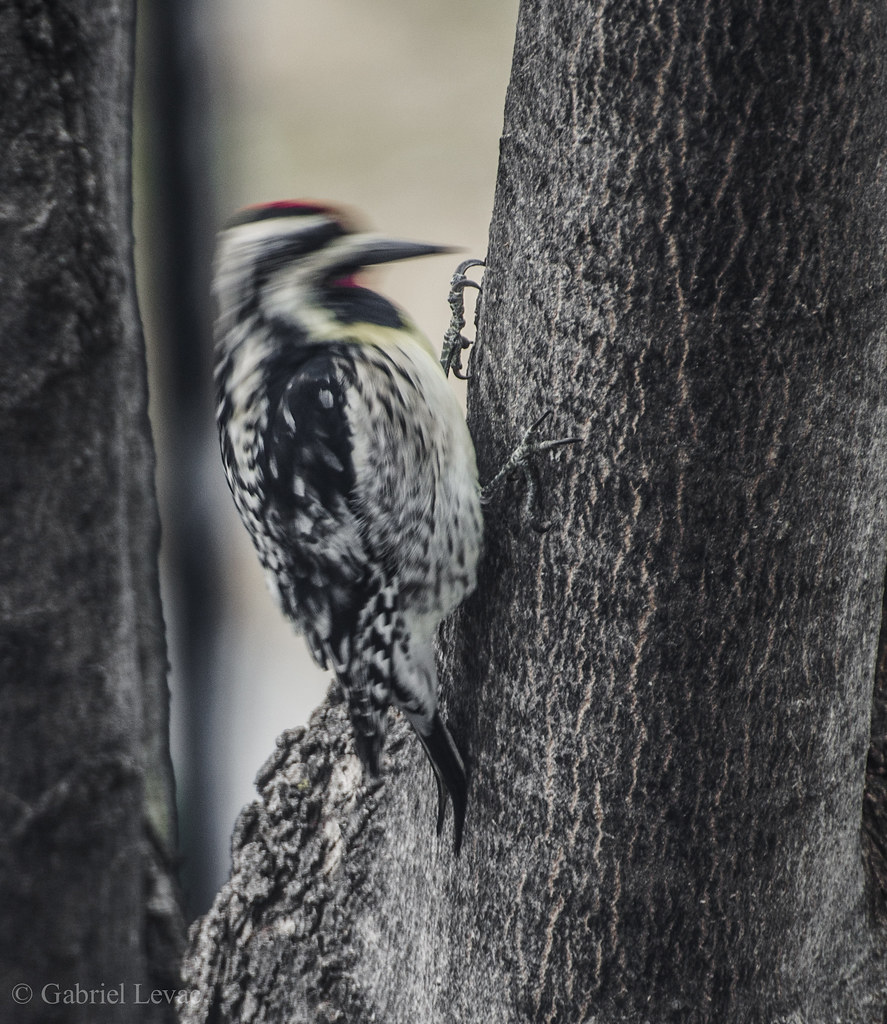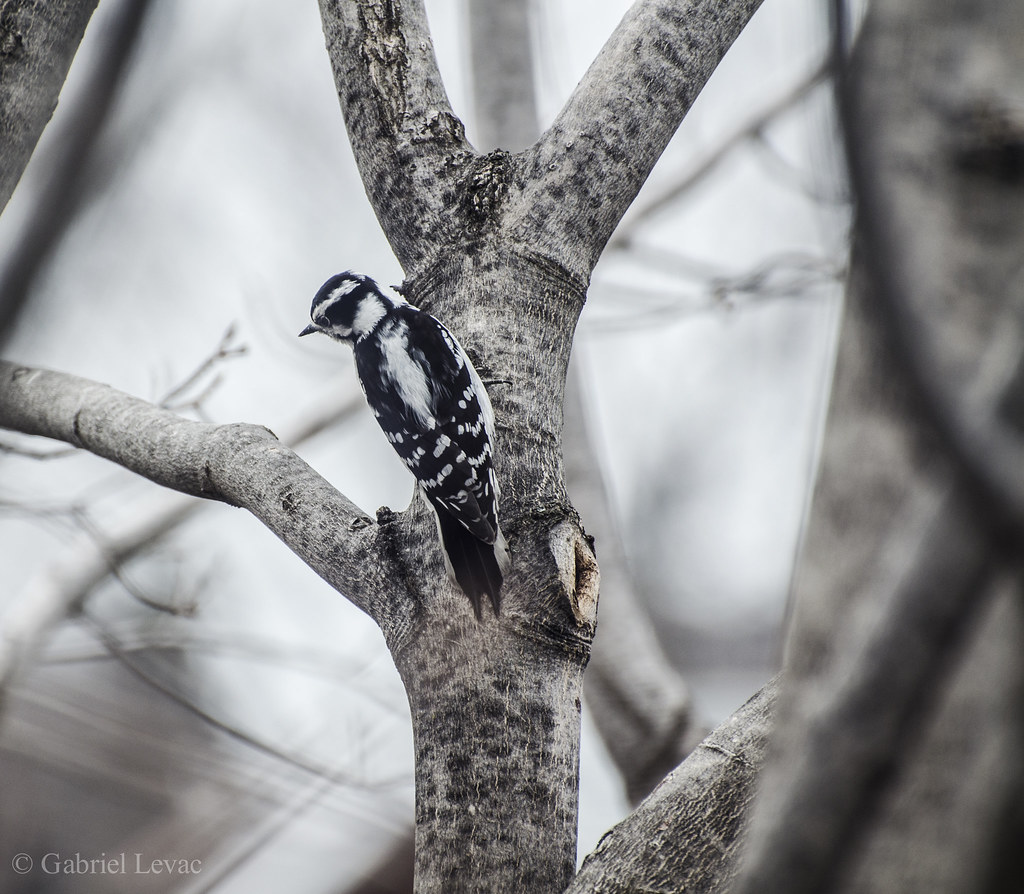Of course, I'm kidding, I would never do something so rash. What I am going to do is discuss some observations on the birds and the, err, squirrels. Unfortunately the bees were busy.
I took some pictures (you may have noticed I have the attitude of a two bit paparazzo when it comes to observing wildlife) of a Yellow-bellied Sapsucker which, despite its cowardly monicker, went about various feeding behaviours with the gusto of a hyena at an all you can eat buffet. To an amateur Zoologist like myself this is interesting because you can make all sorts of sweeping assumptions about the behaviour of the animal and ecosystem based on a single data point. Luckily I had my camera to violate the bird's privacy and "collect data".
 |
| The bird of the hour |
There are four species of sapsuckers (genus Sphyrapicus), all of which are native to the Americas. This one is Sphyrapicus varius, which is native to Canada, Alaska, and the Northeastern US. They persist on fruits, berries, insects, and sap. The birds extract the sap from trees by drilling small holes in the bark much in the fashion of woodpeckers.
 |
| Making dinner |
This behaviour, as pictured above, leaves patches of delicious (I would know, I've tried it) sap running from the tree. As well as feeding the bird this also attracts insects which also contribute to its diet. Although I wasn't close enough to tell if the insect catching racket was working out for the bird on this particular day, I did notice a few other animals take advantage of the sap.
 |
| Freeloading squirrel |
This gray squirrel is enjoying the fruits of the sapsucker's labour and in a startling display of awful table manners, it even chased its host away on one occasion.
 |
| Freeloading woodpecker |
Another lazy wannabe sapsucker was this female Downy Woodpecker, which clearly abused familial privileges when it returned to feed at the sapsucker's table on several occasions. Unfortunately I wasn't able to capture evidence of this behaviour because its visits to the tree were extremely quick.
I also observed Red Squirrels feeding on the patch of sap on several occasions, but I didn't have my camera handy for those moments.
So, not only do Sapsuckers get their own food from trees, they also (unwillingly) feed several other species/varmints at the same time. This demonstrates the fantastic homemaking abilities that I probably discussed at the beginning of this post (I can't even remember what this is about anymore).
So, not only do Sapsuckers get their own food from trees, they also (unwillingly) feed several other species/varmints at the same time. This demonstrates the fantastic homemaking abilities that I probably discussed at the beginning of this post (I can't even remember what this is about anymore).
